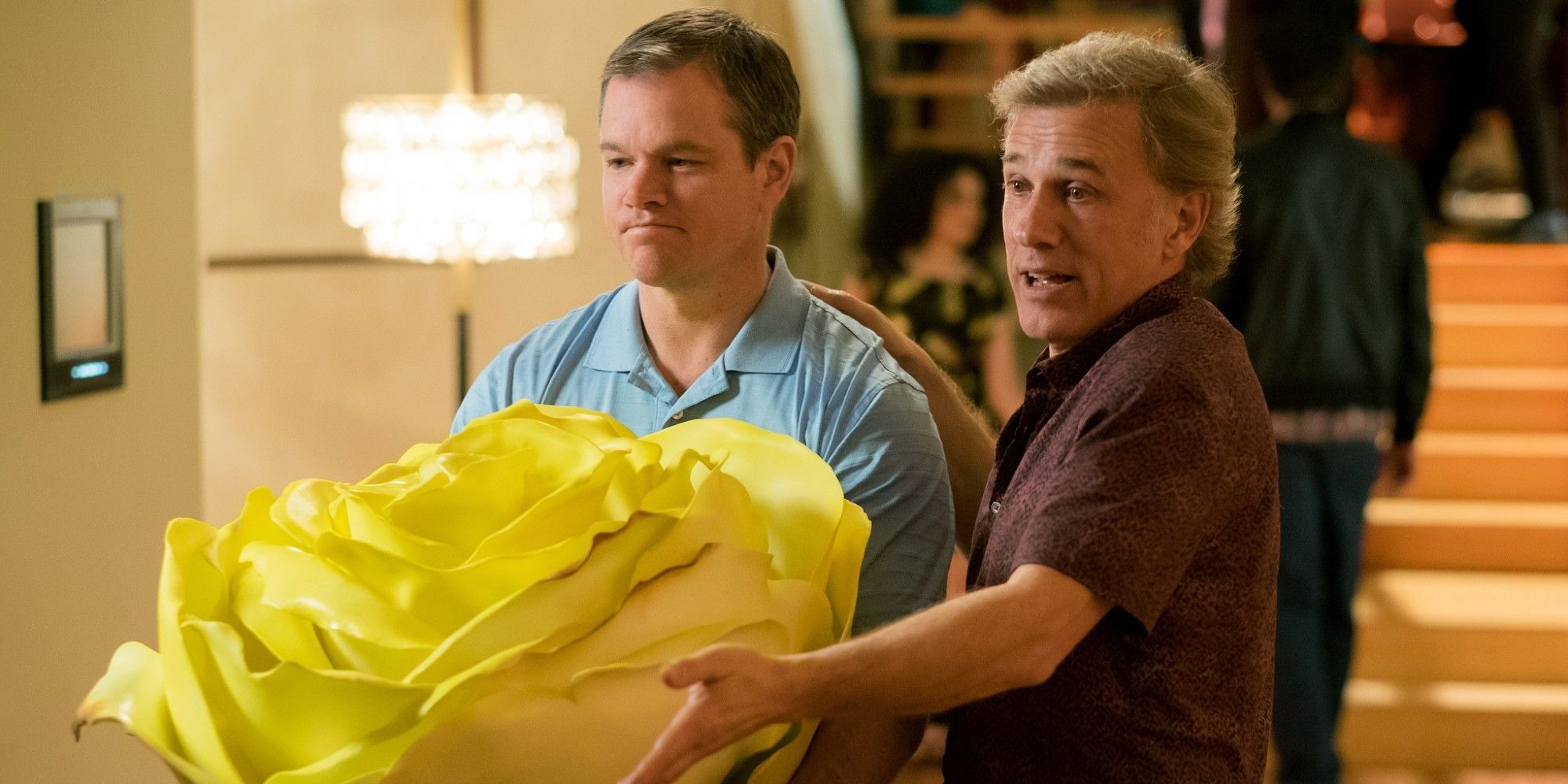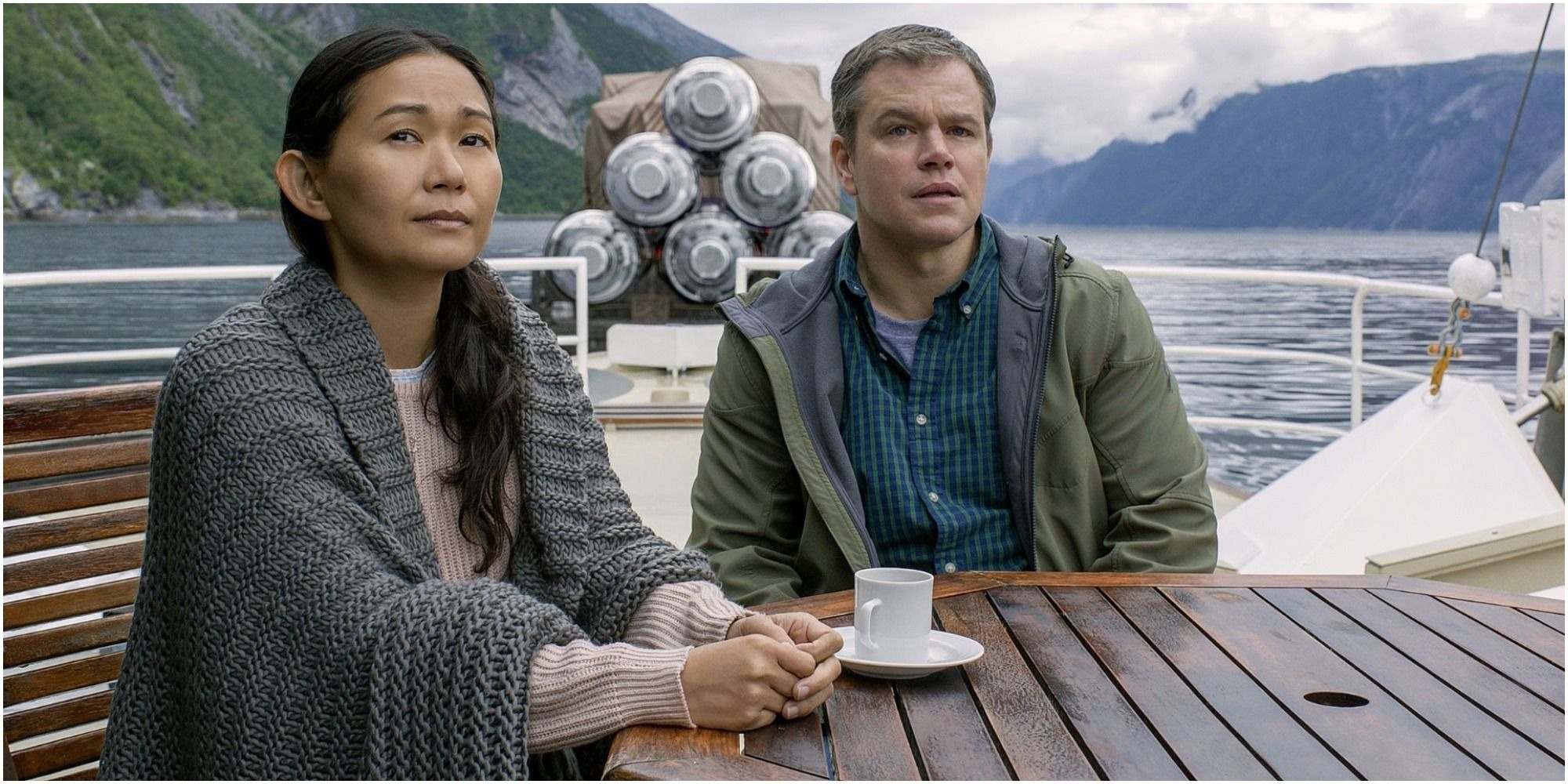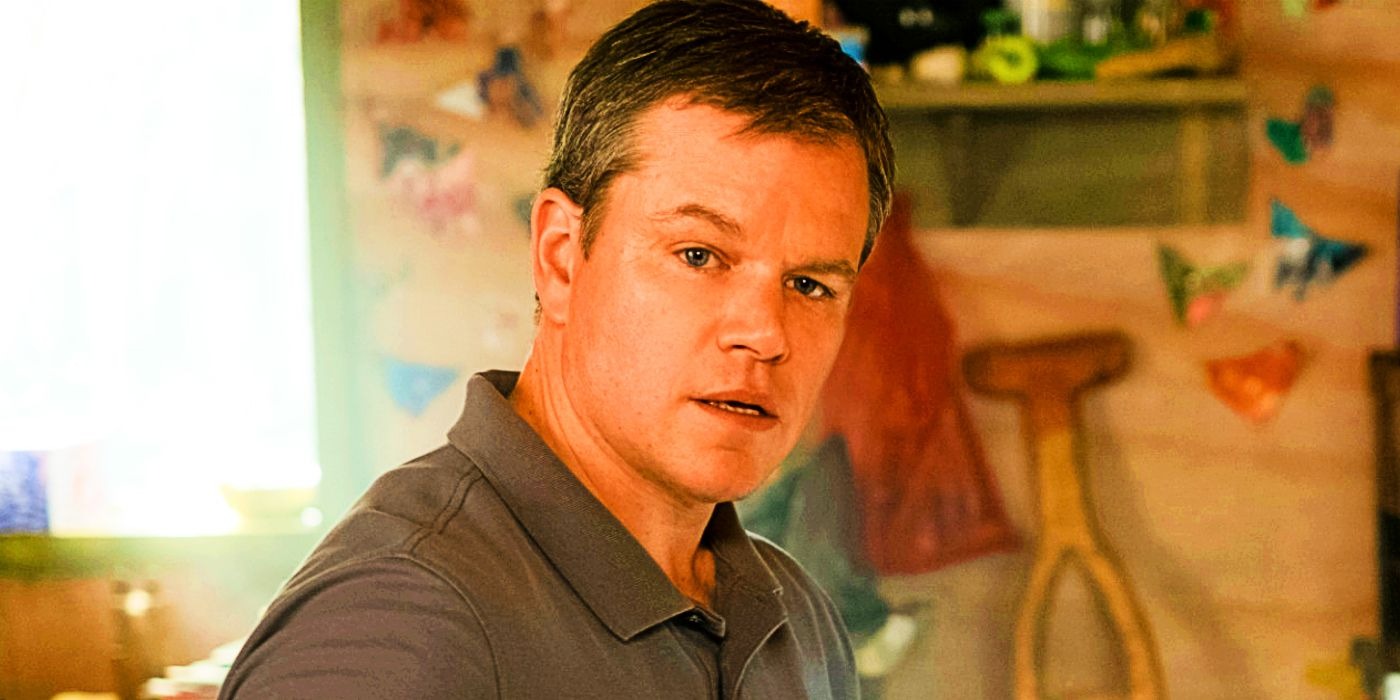Paul Safranek’s journey in Downsizing reaches its resolution with him understanding that not every seemingly superior option is necessarily the right one.
Directed by Alexander Payne, this film marks his seventh project and features a strong cast, including Matt Damon, Hong Chau, Christoph Waltz, and Kristen Wiig.
Though Downsizing was both a critical and financial disappointment upon its 2017 release, with its concept receiving more praise than the execution, Hong Chau’s portrayal of Ngoc Lan Tran stood out, earning her a Golden Globe nomination.

The story revolves around Safranek’s decision to undergo the groundbreaking “downsizing” procedure in an attempt to escape his financial troubles.
However, his plans take an unexpected turn when his wife, Audrey, backs out at the last minute, leaving him to navigate his new reality alone, now reduced to a mere five inches in height.
As he struggles to adapt, he eventually crosses paths with Tran, a woman who was forced into downsizing. Over time, their relationship grows, and when Paul considers joining a secluded vault community designed to protect humanity from extinction, he ultimately chooses to remain with Tran instead, shifting his perspective on what truly matters.
Why Does Paul Rethink His Decision About the Vault?
Paul becomes intrigued by the concept of an underground refuge designed to ensure humanity’s survival and is eager to take part in this plan.
His enthusiasm leads him to urge Ngoc Lan to join him, convinced that it is the most logical decision. However, she holds a different viewpoint, arguing that their efforts should be focused on helping the struggling members of their downsized community instead.
She also challenges the assumption that isolation in the vault guarantees success. Initially set on embracing this opportunity, Paul ultimately changes course—not only out of love for Ngoc Lan but because he comes to accept that her perspective is more grounded in reality.
This marks a clear transformation from the man he was at the start of the film. When he first chose to downsize, it was with the hope of leading a more fulfilling life, yet he ended up losing his wife, distancing himself from friends, and working in a job he found unfulfilling.
The comforts he had sought failed to deliver the immediate happiness he had envisioned. It was only after finding a new support system in Leisureland that he realized the importance of cherishing what he already had rather than always seeking an alternative that only seemed better in theory.
His experience taught him that opportunities to improve life may arise, but not all of them are worth pursuing at the expense of what already brings happiness.
Ngoc Lan Tran’s Influence on Paul
After his divorce, Paul struggled with loneliness, compounded by the fact that he was no longer permitted to work as an occupational therapist. Everything changed when he met Ngoc Lan, a house cleaner who had been downsized against her will.
Through their interactions, he began to see the hardships faced by others in Leisureland, revealing that his misfortunes, while difficult, were not the worst circumstances possible. Inspired by Tran’s resilience and strong work ethic, Paul followed her example, even when it pushed him outside of his comfort zone.
His connection with Ngoc Lan rekindled the sense of purpose he had been missing. Much like with his ex-wife, he found himself falling in love again, but this time, his relationship also provided a path toward personal fulfillment.
With Ngoc Lan, he was able to return to doing what he loved as an occupational therapist, but more importantly, he embraced a new role in helping others.
Witnessing her dedication, despite the challenges she had endured, motivated him not just to improve himself but to find genuine happiness in his new reality.
Dr. Jørgen Asbjørnsen’s Contingency Plan Raises Questions
A major reason why Downsizing takes an unexpectedly darker turn in its third act stems from its final twist. Dr. Jørgen Asbjørnsen unveils the alarming revelation that methane emissions from Antarctica have led scientists to predict humanity’s inevitable extinction.
As a countermeasure, he proposes that members of the original downsized community retreat into an underground vault, remaining there until future generations can emerge when Earth becomes habitable again.
However, characters like Dusan Mirkovic and Joris Konrad view this plan with skepticism, likening it to a cult and suggesting that the supposed extinction event is still centuries away.
Given that Asbjørnsen developed the downsizing process to improve human life, the idea of trusting him to guide humanity’s future initially seems reasonable.
However, there are no guarantees about what will unfold throughout hundreds or even thousands of years. Downsizing also highlights the potential dangers of such a procedure falling into the wrong hands.
Even if Asbjørnsen’s intentions are noble, there is no certainty that his descendants—or those who assume control after him—will uphold his vision, which could lead to unforeseen complications.
To add to the uncertainty, the film leaves the effectiveness of the vault plan unresolved, making it unclear whether the strategy would succeed at all.
Regardless of the vault’s potential success, that was never the true point of Asbjørnsen’s procedure. It was meant to emphasize that in life, no decision comes with absolute certainty.
Paul came to understand this after undergoing the downsizing process himself. Instead of making choices based solely on what appeared to offer the greatest advantage, he opted for the path that allowed him to be truly content, rather than the one that seemed most beneficial on the surface.

The Deeper Meaning Behind Downsizing
While some believe Downsizing squandered its potential by shifting from a seemingly lighthearted comedy to much darker themes, its message remains clear.
At the start, Paul’s situation serves as a humorous example of plans going awry, but as the film progresses, it becomes evident that every decision he makes carries lasting consequences.
He attempted to escape financial difficulties by choosing downsizing, but once the process was complete, there was no way to undo it.
As the story unfolds, Paul’s initial frustration over what he lost is understandable, especially considering how Audrey’s abrupt departure also complicated his new life in Leisureland. However, with time, he adapts, forming bonds with Dusan and developing a meaningful connection with Ngoc Lan.
While his circumstances couldn’t be reversed—just as Asbjørnsen could not undo the environmental damage—he found a way to embrace his new reality. This transformation allowed him to experience happiness unexpectedly, despite his initial missteps.
Downsizing conveys that while past choices cannot be erased, individuals still can learn from them and grow. Paul could have resigned himself to misery, and no one would have faulted him for it.
However, through his experiences and newfound relationships, he discovered that his life still held value and joy, even if his initial choice did not yield the outcome he originally envisioned.



